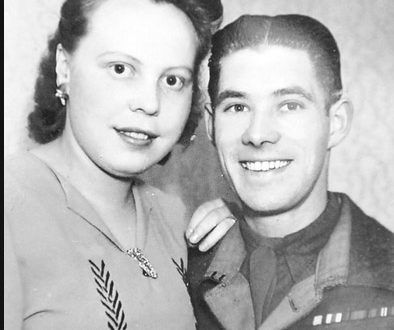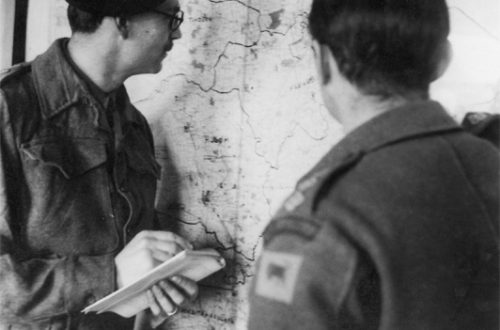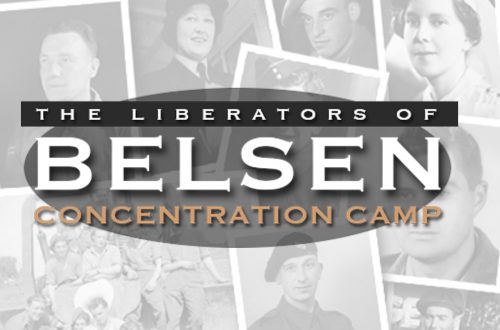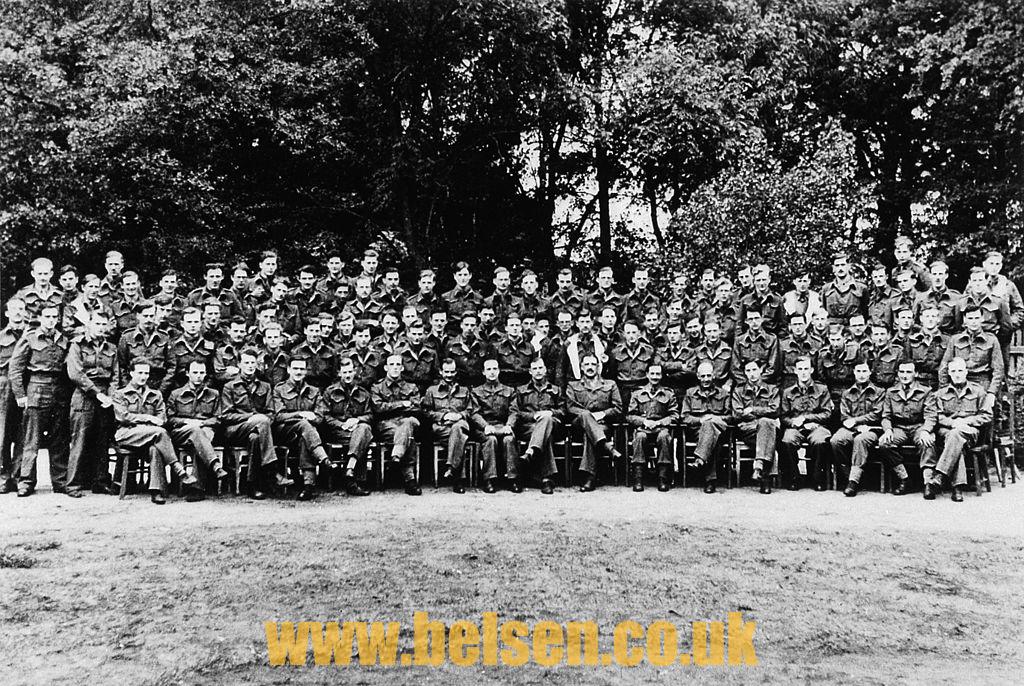
Alan MacAuslan – Medical Student
While studying at St Thomas’ Hospital, medical student Alan MacAuslan joined a volunteer party of aid relief comprising of medical students from London’s teaching hospitals.
Alan was sent to the newly liberated Nazi death camp of Bergen-Belsen.
Here Alan describes his first impressions of the camp, his aid work, the disastrous effects of protein hydrolysate, the burning of Belsen, and the high morbidity rate among relief workers.
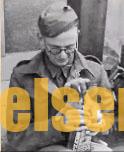
Responding to a call for British medical students to help, Alan MacAuslan, a 23-year-old studying at St Thomas’ Hospital in London, volunteered.
With 11 fellow students, he arrived in Germany a fortnight later. Before even seeing the camp, he could smell the stench of death from the barracks he was staying at three miles away.
With six months to go before his final exams, the young medic was unprepared and untrained for treating the level of starvation that he had to deal with.
He clearly remembers Hut 213, to which he was assigned with a fellow student, a structure about 120ft by 20ft, fitted with three-tier bunks, and “just enough room to squeeze between them”.
Entering it for the first time, he said, was incredible.
“The bunks were crammed with about three to six girls in each one. They were mainly teenage girls and women in their mid-20s, as the older women didn’t survive.
“They were naked, starving, covered in scabies and bed sores and emaciated.”
They would touch our sleeves as we went past, and cry for us to come back
Survivor’s ‘unspeakable relief’
The pair began by feeding the starving prisoners with soup.
“You had to prop the poor things up and offer them food. And then we tried to tidy the hut up – there were 13 dead inside, so we dragged them out.”
To count those in the hut, Dr MacAuslan and his fellow medic offered a cigarette and a sweet to anyone who could walk outside.
“About 138 could just about totter – I remember clearly that the cigarettes came in packs of 50.”
Another 300 inmates were unable to move from the bunks, while 20 female guards were healthy. And then there were the 13 dead.
The horrific treatment at Belsen meant that 20,000 of the about 50,000 inmates alive when British troops arrived were seriously or critically ill. Despite medical effort, 13,000 Belsen inmates died after liberation.
Dr MacAuslan kept a record of the death rate in his hut: after the first 13 died, seven died the next day, six the next, then four on the fourth day and two on the fifth.
On day eight and nine, no one in his hut died.
“Wartime conditions in Britain weren’t like that, but I had been a soldier so was used to adapting to different conditions,” he told the BBC News website from his home in Suffolk.
“We had no idea what we were up against, nor had we ever had to treat starvation. We were used to seeing injuries from war and bomb damage.”
Originally built in 1943 for 8,000 inmates, about 60,000 Jewish inmates were transported to Belsen during late 1944 and early 1945 from concentration camps.
When the troops arrived in April 1945, it was a camp infested with typhus, dysentery and tuberculosis.
Dr MacAuslan, who wrote an account of his short time in Belsen once back in the UK, said the inmates used to call out in German, “Doctor, doctor, please, please” as he passed by.
“They would touch our sleeves as we went past, and cry for us to come back so that they could tell their pitiful tales again, how their husbands had been flogged to death, their relatives killed.
“One or two of them screamed the whole time.”
The photographs and newsreel footage taken at Belsen and other camps led to widespread and intense revulsion towards Nazi Germany and Germans in general.
“Nobody in Britain had any idea of this. We knew people were locked up, but not like this,” said the 83-year-old retired doctor.
“We relief people did what we had to do but I came away with great admiration for the internees – they were magnificent to have survived that sort of thing. Any sort of heroics was done by them.”
The final act the British troops performed at Belsen, 60km (37 miles) north-east of Hanover, was to burn it down.
This was to prevent lice rampant in the installation from spreading the typhus epidemic further. The site is now a memorial garden.
***
No one forgot the moment of first entering ‘their’ hut. ‘We walked in, held our nose, walked round, walked out again, looked at each other and said “Where do we start?”’ Ian Proctor remembered, ‘It was full of the most emaciated people I have ever seen in my life. There was supposed to be a loo at the far end but they couldn’t get up to go to it. It was almost up to the top of one’s boots in excreta. One just stumped about in it. People by now were too weak to use the lavatory and were just lying there in their own faeces and urine which dripped down from one bunk to the next—quite appalling.’ Writing in 1945, Alan MacAuslan caught more precise details:
‘We took a look round—there was faeces all over the floor—the majority of people having diarrhoea. I was standing aghast in the midst of all this filth trying to get used to the smell which was a mixture of post-mortem room, a sewer, sweat, and foul pus, when I heard a scrabbling on the floor. I looked down in the half light and saw a woman crouching at my feet. She had black matted hair, well populated and her ribs stood out as though there were nothing between them, her arms were so thin that they were horrible. She was defecating, but she was so weak that she could not life her buttocks from the floor and, as she had diarrhoea, the liquid yellow stools bubbled over her thighs.’
7,179 total views

